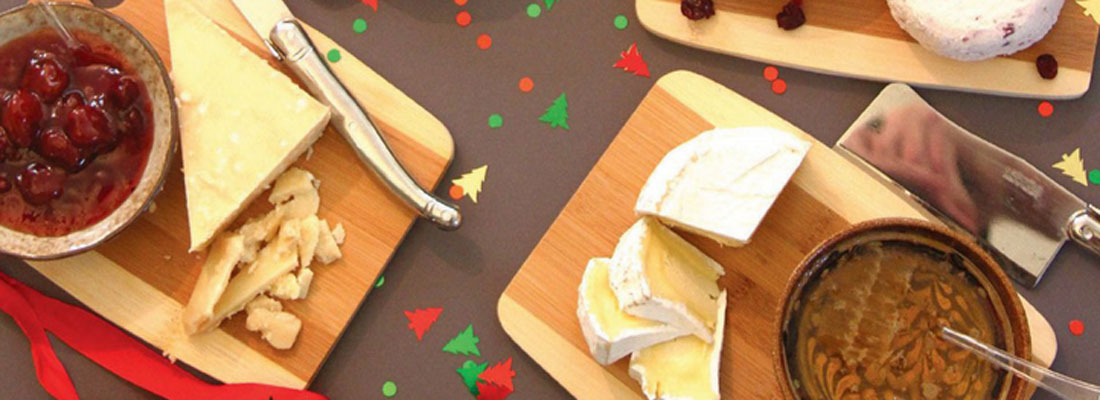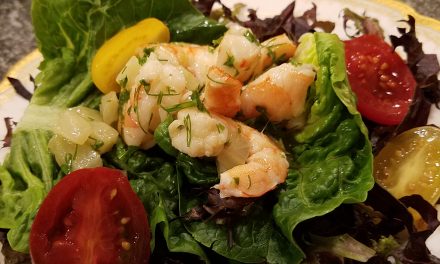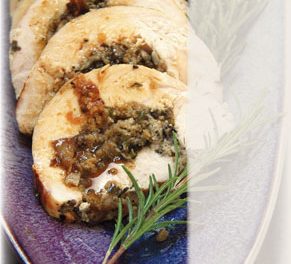By Adam Centamore.
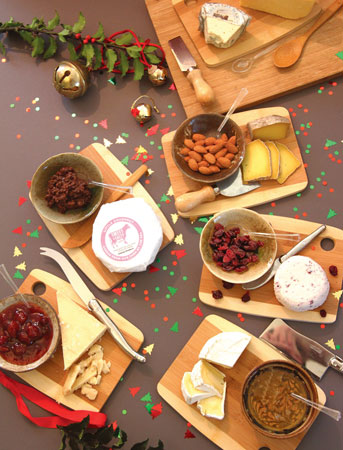
Tips for creating the perfect holiday cheese plate.
The best part of the holidays is people gathering to cook and eat. Maybe it’s a traditional roast, a new take on whipped sweet potatoes, or an unexpected plate of blondies on the dessert table. Holiday food is central to everyone’s enjoyment. It’s all so delicious.
As a cheese and wine educator, I brace myself for the calls that invariably come at this time of year. Friends, relatives, and clients alike are planning their holiday feasts and they need advice on what to serve. Whether part of a full party spread or a dedicated course at the holiday meal, a well-curated cheese selection adds to everyone’s cheer. Being responsible for the cheese course can be a bit harrowing.
I totally get it. Nobody wants to screw it up.
With so many outstanding farms and producers in our own backyard, creating a magnificent cheese course or platter is simpler than you think…if you keep a few basics in mind. From what to serve to how to serve it, here are some tips to consider.
1. Keep your selection simple.
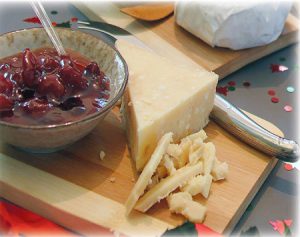
It’s easy to get carried away when picking cheeses for an occasion. After all, there are so many tasty choices! When it comes to making your selections, it’s important not to overdo it. More isn’t always better.
Deciding on the right number depends on the scenario. A platter for everyone to enjoy at a holiday party can handle four or five choices without overloading guests with options. A traditional cheese course served towards the end of a meal might call for just two or three different selections.
These guidelines can be flexible. If the meal is a series of hors-d’oeuvres courses, you can increase the number of cheeses. If the holiday buffet table is teeming with options, maybe cut back the cheese selections a little. There’s no “right” answer!
2. Choose a range of styles and milk types.

A common mistake is choosing cheeses too similar in style to your plate or board. It’s great to have an alpine-style cheese (for example), but less so when there are three of them (unless that’s the theme). Mix it up a little bit!
By all means, include an alpine-style cheese—the savory, rich flavors are perfect for the season. In Williamstown, MA Cricket Creek Farm’s outstanding Maggie’s Round is a pitch-perfect example. Modeled after cheeses found in the Italian Alps, it’s at once fruity and bright with just the right amount of earthiness.
Alongside that, maybe mix in something soft and creamy. Down in Little Compton, Rhode Island, Sweet & Salty Farm’s Little Something would absolutely fit the bill. Delicate and creamy, it’s a total crowd pleaser. Add in something with a little more horsepower and your lineup just became a lot more interesting. Try Great Hill Blue from Marion, MA. It has just the right amount of bite.
The same consideration goes for milk types. Serve a mixture of cow, sheep, and goat milk cheeses. The variety of flavors and textures will keep your guests coming back for more!
3. Serve your cheeses at the right temperature.
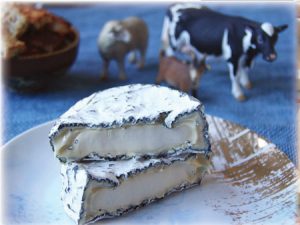
Ever notice how cold food really doesn’t taste like much? While refrigeration is great for preserving food, it also mutes flavor. As the temperature drops, a food’s aromatic and flavor compounds become less detectable. Blandness ensues.
Cheese is no exception. Pulling your cheeses from the fridge right when it’s time to eat them isn’t doing anyone any good. Give them time to warm up a little bit. An hour or so should do it. It makes all the
difference in cheeses with soft, rich interiors. Valley View Farmstead’s New Meadow Camembert is a great example. Made in Topsfield, MA the recipe is based on the classic cheese from Normandy. The buttery and mushroomy interior is at its finest when near room temperature and the cheese has had a chance to soften a bit.
4. Feel free to serve condiments!
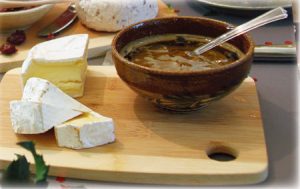
Try our Seared Pear recipe with local cheese.
Holiday eating is all about pleasure. Anything that makes people enjoy their dining experience more is welcome at my table, and that includes condiments to pair with cheese.
Yes, eating cheese by itself is wonderful. Plain and simple. But it can be an even greater pleasure when paired with the right condiment. Foxboro Cheese Company in Foxborough makes a delightful Asiago that is right at home with a dollop of cherry jam, or try the seared pear recipe. Couet Farm in Dudley makes the herb-coated, cow’s milk wonder, Fran de Maqu
is. It’s even more of a treat with a drizzle of Carlisle Honey’s Red Bamboo (aka Japanese knotweed) honey. The herbaceous aroma and flavor of the cheese is heightened by the honey’s subtlety-sweet taste and thicker consistency.
Not all condiments have to be sweet, however. A handful of hazelnuts or a daub of really good mustard can work wonders. In Cummington, Grace Hill Farm produces Valais, a gorgeous cow milk cheese modeled after Raclette, which is superb with a smear of walnut mustard. The slightly pungent cheese melds with the nuttiness of the mustard. It’s perfect for the chilly weather.
5. Shop local for your cheeses.
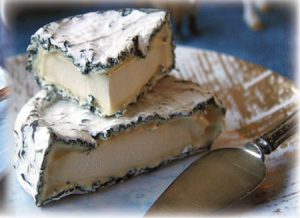
Living in New England, we’re a bit spoiled not having to travel far at all to find the above mentioned (and plenty other) amazing cheeses. Shop our great farmers’ markets from Cohasset to Westport, Plymouth to Attleboro, for small-production cheeses. Ask questions about the cheese on offer and recommendations for serving. Can’t make it to a farmers’ market? Not a problem. Destination shops like The Bloomy Rind in Hingham, Chatham Cheese Shop in Chatham, Formaggio Kitchen in Boston and Cambridge, and the Appleton Farms and Jasper Hill Farms stalls at the Boston Public Market have it covered. Many offer to ship as well, which can be quite convenient around the holidays. Additionally, look closely for local cheese options at your favorite supermarket. You may be surprised by the selection.

